



Table of Contents
- Introduction to Mumbai 3.0 (Third Mumbai)
- Mumbai 3.0: Latest Updates
- Historical Context
- Planning and Development
- Key Infrastructure Projects
- Economic Implications
- Environmental and Sustainable Development
- Challenges and Future Prospects
- Conclusion
- Faq's
Introduction to Mumbai 3.0 (Third Mumbai)
Third Mumbai, officially known as Karnala-Sai-Chirner New Town (KSC New Town), is a visionary urban development project in Maharashtra, India. Designed to accommodate the growing population and rising infrastructure demands of the Mumbai Metropolitan Region (MMR), this ambitious project aims to create a modern, well-planned city with world-class connectivity, sustainable urban planning, and a thriving economic ecosystem.
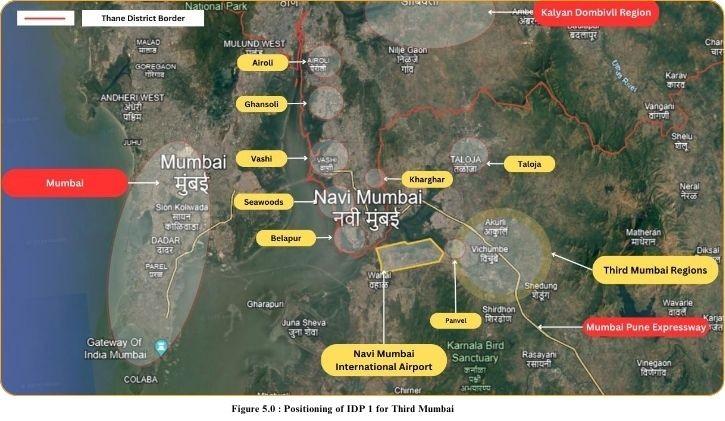 Third Mumbai, LinkedIn
Third Mumbai, LinkedIn
Spanning approximately 324 square kilometers, Third Mumbai is set to emerge as a major economic and residential hub, strategically complementing the already established cities of Mumbai and Navi Mumbai. With a focus on smart infrastructure, efficient transportation networks, and sustainable development, this upcoming metropolis is expected to transform Maharashtra's urban landscape, easing congestion in Mumbai while fostering new business and housing opportunities.
Mumbai 3.0: Latest Updates
As Third Mumbai (KSC New Town) progresses, several key developments have emerged in early 2025, shaping the future of this ambitious urban expansion project.
1. Government-Led Surveys and Master Plan Development
- The Maharashtra government has initiated comprehensive aerial and ground surveys across 124 villages to facilitate structured development.
- The Mumbai Metropolitan Region Development Authority (MMRDA) is overseeing these surveys, which aim to enhance connectivity and optimize land use.
- The master plan, incorporating these survey insights, is expected to be completed by August 2026.
2. Major Investment Commitments
- Blackstone Group, one of the world's largest private equity firms, has announced a $11 billion investment in Maharashtra.
- Out of this, $5 billion is specifically allocated to KSC New Town, highlighting investor confidence in the region's economic potential.
- Other global investors are also evaluating opportunities in real estate, IT hubs, logistics, and infrastructure within Third Mumbai.
3. Local Community Resistance
- The proposed development has sparked protests from villagers in the 124 affected areas.
- Community-led committees have been formed to oppose large-scale land acquisition, citing concerns that the project may primarily benefit large developers rather than local residents.
- Activists argue that land prices and livelihoods are at risk, and demand fair compensation and transparent relocation policies.
4. MMRDA Cancels Initial Survey Bids
- The MMRDA initially invited bids to conduct the survey and master planning of KSC New Town but later scrapped the process due to flaws in the bidding mechanism.
- A revised bidding process will be reissued soon, integrating necessary policy and administrative adjustments.
Historical Context
The genesis of Third Mumbai dates back to 2013 when the Maharashtra government sought to prevent unplanned development around the upcoming Navi Mumbai International Airport. This initiative led to the creation of the Navi Mumbai Airport Influence Notified Area (NAINA), encompassing regions within a 25-kilometer radius of the airport. The primary objective was to ensure systematic urban planning and infrastructure development in the vicinity.
The inauguration of the Mumbai Trans Harbour Link (MTHL), also known as Atal Setu, further expanded the scope of this development. The MTHL, a sea-link bridge connecting Mumbai and Navi Mumbai, significantly reduced travel time between these cities, making the surrounding areas more accessible and attractive for development. Recognizing this potential, the Maharashtra government integrated the regions influenced by the MTHL into the NAINA project, collectively branding them as "Third Mumbai."
On October 21, 2024, the Mumbai Metropolitan Region Development Authority (MMRDA), the nodal agency overseeing this project, officially named the area Karnala-Sai-Chirner New Town. This designation honors three prominent villages- Karnala, Sai, and Chirner, situated within the proposed city's expanse. The abbreviation "KSC New Town" has since become synonymous with this ambitious urban endeavor.
Planning and Development
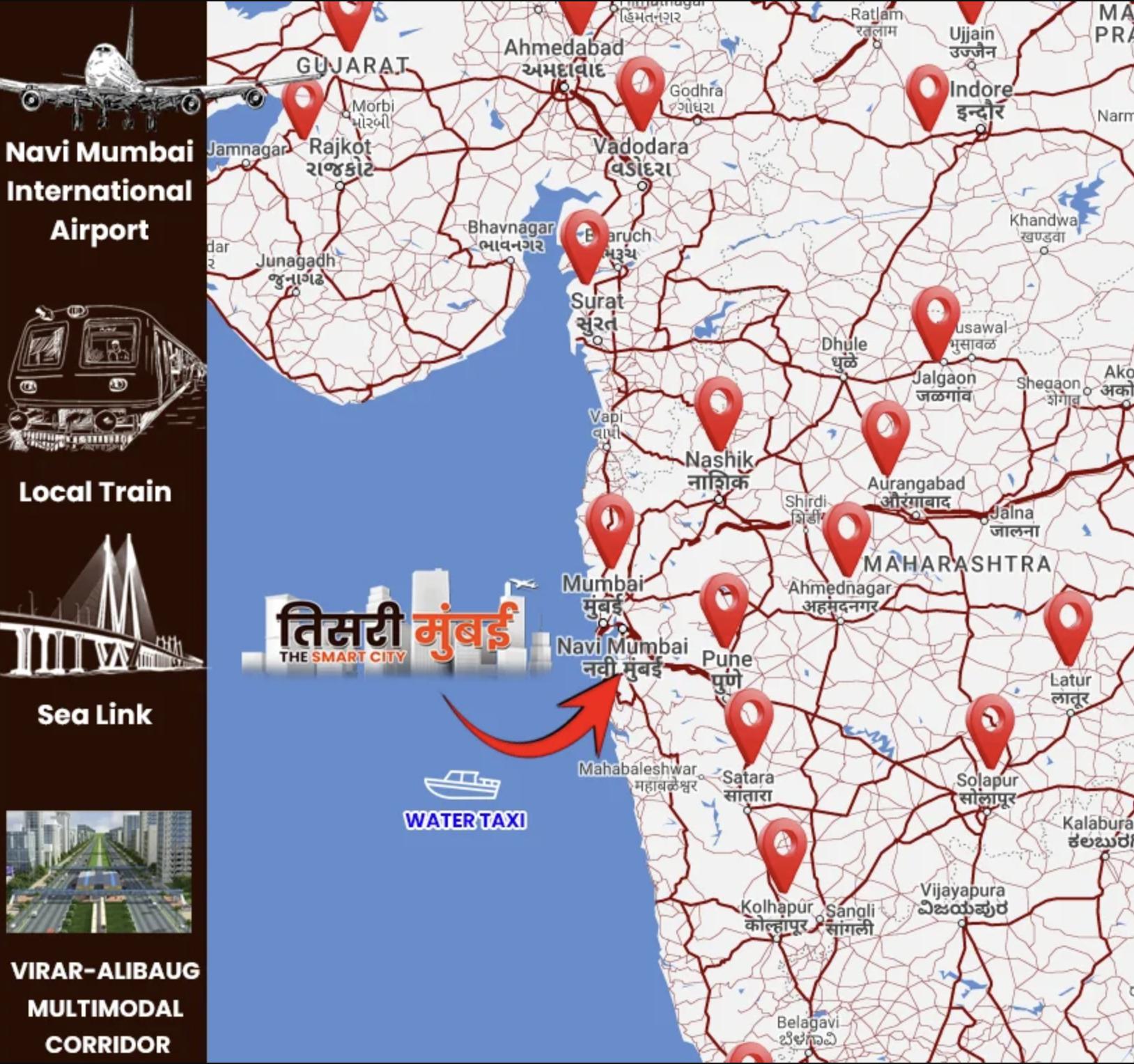 Third Mumbai, Tisari Mumbai
Third Mumbai, Tisari Mumbai
The strategic vision for Third Mumbai centers on creating a self-sustaining urban ecosystem that alleviates the infrastructural pressures on Mumbai and Navi Mumbai. Key components of this plan include:
- Infrastructure Development: Emphasis on constructing robust transportation networks, including roadways, metro lines, and efficient public transit systems, to ensure seamless connectivity within the region and to neighboring cities.
- Economic Zones: Establishment of dedicated commercial and industrial sectors to attract businesses, foster economic growth, and generate employment opportunities.
- Residential Areas: Designing diverse housing solutions catering to various socio-economic groups, ensuring affordable and quality living spaces.
- Green Spaces: Incorporation of parks, recreational areas, and conservation zones to promote environmental sustainability and enhance the quality of life for residents.
In a significant announcement on December 7, 2024, Chief Minister Devendra Fadnavis highlighted the transformative potential of Third Mumbai during the India Business Leader Awards (IBLA) hosted by CNBC-TV18. He emphasized that the area designated for Third Mumbai is approximately three times the size of the current city of Mumbai, underscoring its capacity to become India's next major business capital. This ambitious scale reflects the government's commitment to creating a metropolis that not only addresses current urban challenges but also anticipates future growth and development needs.
Also Read: Mumbai to Goa at Full Speed: Highway Upgrade Set to Change Road Travel
Key Infrastructure Projects
The successful realization of Third Mumbai hinges on several critical infrastructure projects designed to enhance connectivity and support urban expansion:
1. Mumbai Trans Harbour Link (MTHL)
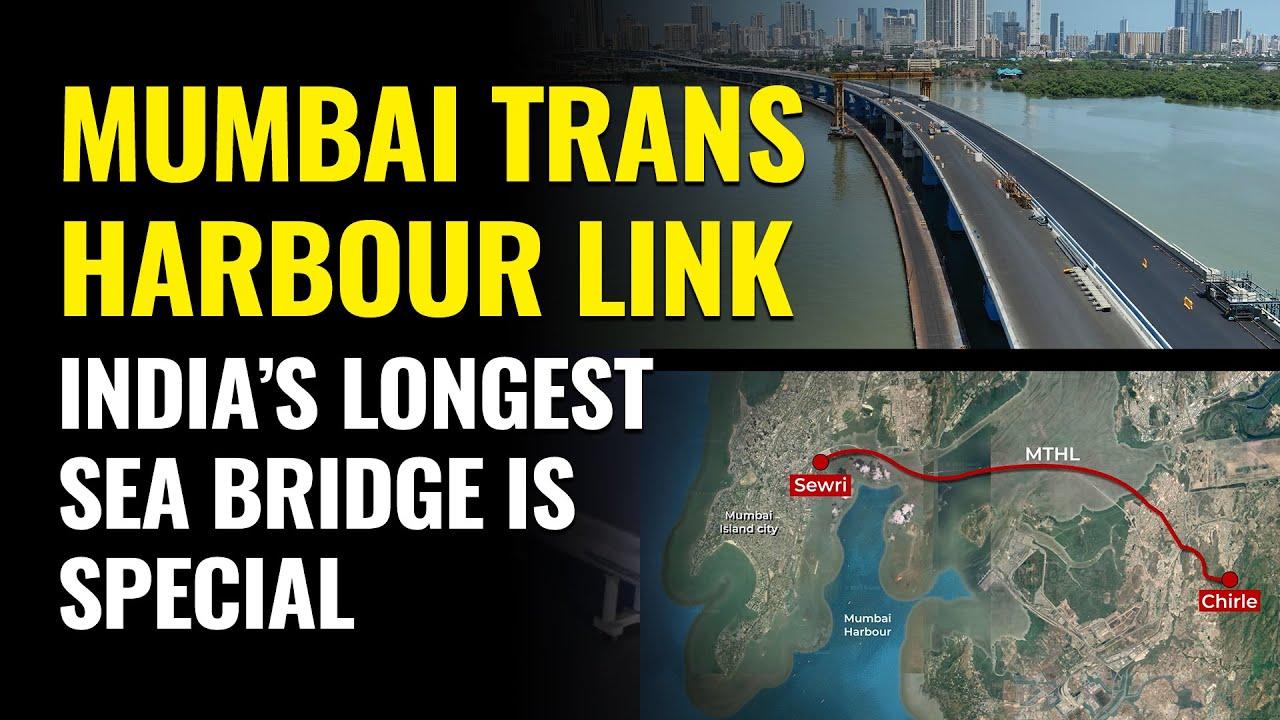 Mumbai Trans Harbour Link, Youtube
Mumbai Trans Harbour Link, Youtube
The MTHL, inaugurated in early 2025, is a monumental sea-link bridge connecting Sewri in Mumbai to Nhava Sheva in Navi Mumbai. Spanning approximately 22 kilometers, it stands as one of India's longest sea bridges. The MTHL has dramatically reduced travel time between Mumbai and Navi Mumbai to just about 20 minutes, acting as a catalyst for real estate and economic development in the adjoining regions. This improved accessibility has made areas within Third Mumbai more attractive to investors and residents alike.
Also Read: Mumbai Trans Harbour Link's Impact on Real Estate Dynamics
2. Navi Mumbai International Airport
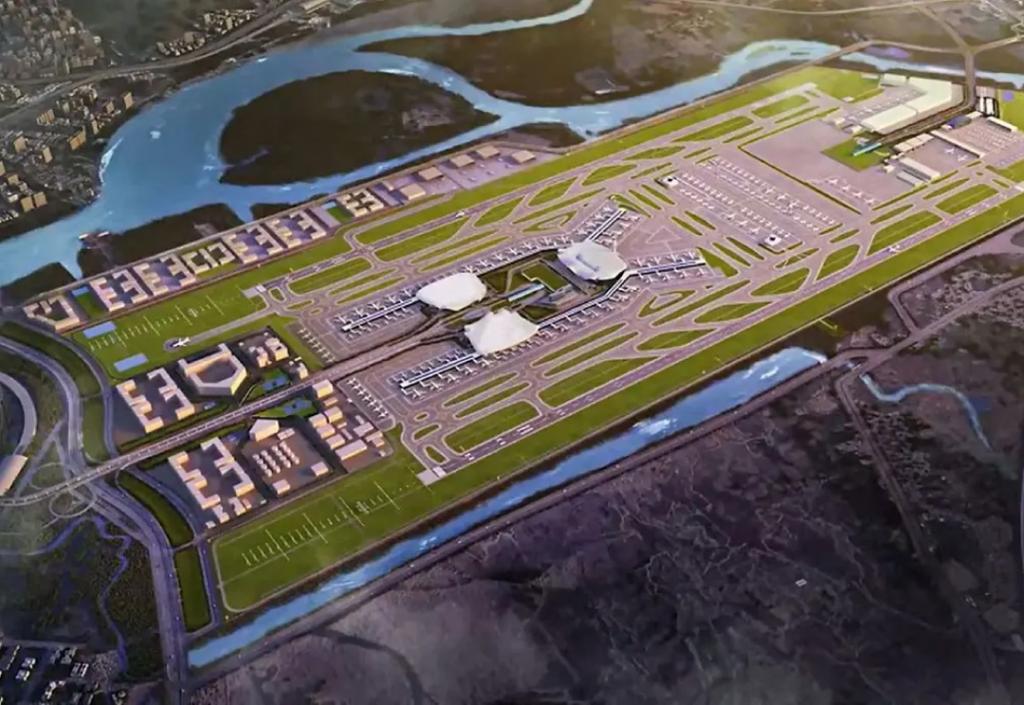 Navi Mumbai International Airport, Aviation A2Z
Navi Mumbai International Airport, Aviation A2Z
Developed by Adani Enterprises, the Navi Mumbai International Airport is a cornerstone project within Third Mumbai. Spread over approximately 2,866 acres, the airport is designed to alleviate congestion at Mumbai's Chhatrapati Shivaji Maharaj International Airport. Its strategic location near Panvel in the Raigad district positions it as a pivotal gateway for both domestic and international travelers. The airport's presence is expected to spur ancillary developments, including hospitality, retail, and logistics sectors, thereby boosting the region's economy.
3. Metro Line 3 (Aqua Line)
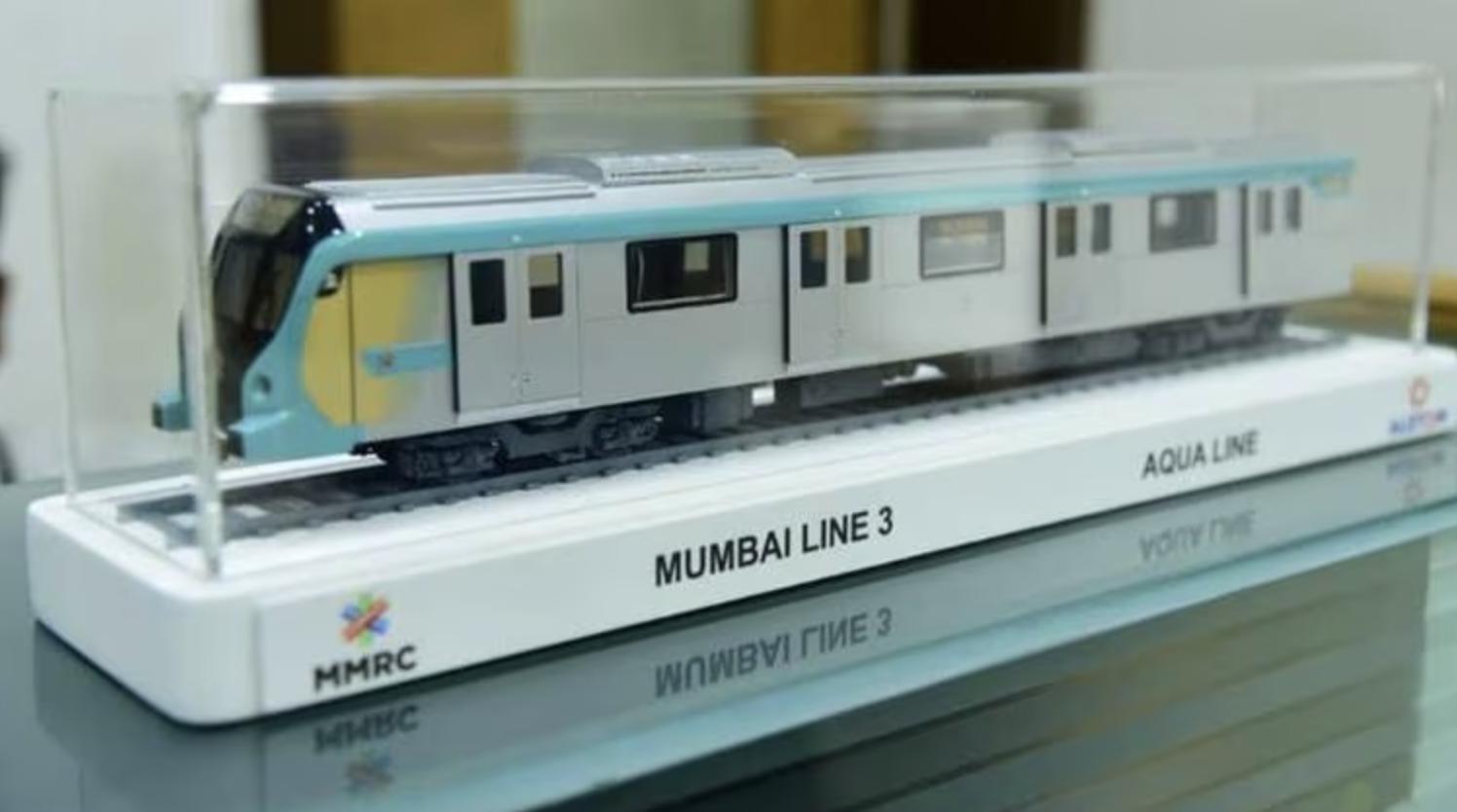 Mumbai Metro Line 3, The Indian Express
Mumbai Metro Line 3, The Indian Express
Metro Line 3, also known as the Aqua Line, is Mumbai's first fully underground metro corridor. Extending over 33.5 kilometers, it connects key areas from Colaba in South Mumbai to SEEPZ and Aarey in the north. The line includes 27 underground stations and is designed to integrate seamlessly with other metro lines, suburban railways, and the Mumbai Monorail. This extensive network enhances intra-city connectivity, making commuting more efficient and reducing reliance on road transport. The improved accessibility is anticipated to drive residential and commercial growth within Third Mumbai.
Also Read: Mumbai Metro Line 3: Updates, Routes, Interchange Stations, Features
Economic Implications
The development of Third Mumbai is poised to have far-reaching economic impacts:
- Investment Opportunities: The region has attracted significant interest from global investors. Blackstone Group announced plans in January 2025 to invest up to $11 billion in Maharashtra over the next three to five years, with $5 billion earmarked specifically for projects within Third Mumbai. This substantial investment underscores the confidence in the region's growth potential and is expected to stimulate further economic activity.
- Job Creation: The influx of businesses and industries is projected to generate numerous employment opportunities across sectors such as technology, manufacturing, services, and logistics. This job creation is vital for accommodating the region's growing population and enhancing the overall standard of living.
- Real Estate Development: The enhanced connectivity and infrastructure have led to a surge in real estate projects. Developers are focusing on creating integrated townships, commercial complexes, and residential enclaves to meet the rising demand. For instance, property prices in Navi Mumbai and surrounding areas have already seen an upward trend due to the anticipation of rapid development in Third Mumbai. Real estate giants are strategically investing in this region, foreseeing its transformation into a major urban center.
Environmental and Sustainable Development
One of the core objectives of Third Mumbai is to incorporate sustainable urban planning practices to ensure a balanced coexistence of development and nature. Some of the key sustainability initiatives include:
- Eco-Friendly Infrastructure: The government has proposed the integration of green building standards in residential and commercial constructions. Use of renewable energy sources such as solar panels, rainwater harvesting systems, and energy-efficient materials will be encouraged.
- Preservation of Green Spaces: Large tracts of land have been earmarked for parks, gardens, and nature reserves. These areas will provide recreational opportunities for residents while maintaining the region's ecological balance.
- Smart City Features: The use of Internet of Things (IoT)-enabled infrastructure, AI-driven traffic management systems, and waste-to-energy solutions will ensure that the city operates efficiently with minimal environmental impact.
- Public Transportation Focus: A well-integrated public transportation network will be promoted to reduce dependency on private vehicles, thereby lowering carbon emissions.
Challenges and Future Prospects
While Third Mumbai presents a transformative vision for urban expansion, it also faces several challenges that need to be addressed to ensure successful implementation:
Challenges
- Land Acquisition and Rehabilitation: Some of the proposed development areas consist of agricultural land and existing villages. Ensuring fair compensation and proper rehabilitation for affected communities is critical.
- Funding and Investment Risks: Although there has been significant interest from investors, consistent financial backing is essential for timely execution.
- Environmental Concerns: Large-scale construction activities may disrupt local ecosystems, requiring stringent environmental clearances and mitigation measures.
- Regulatory Approvals: Coordinating between multiple government agencies for approvals, zoning regulations, and policy implementations may pose bureaucratic delays.
Future Prospects
Despite the challenges, Third Mumbai holds immense potential to become one of India's most modern urban centers. If executed successfully, it will:
- Ease Population Pressure on Mumbai and Navi Mumbai, offering a high standard of living to millions.
- Attract Global Businesses, making it a strategic investment hub.
- Boost Maharashtra's Economy, strengthening its position as India's leading state in terms of infrastructure and business development.
- Enhance Quality of Life, by offering world-class amenities, seamless transportation, and green environments.
Conclusion
Third Mumbai (KSC New Town) is a visionary project that aims to redefine urban living in Maharashtra. With state-of-the-art infrastructure, economic opportunities, and sustainable development at its core, it is set to become an integral part of India's growth story. While challenges persist, the strategic planning, government initiatives, and private sector participation make this ambitious project a promising prospect for the future. If executed efficiently, Third Mumbai will not only complement Mumbai and Navi Mumbai but will also serve as a model city for future urban expansions in India.
explore further
Latest from Editorials
More from Publications
Resources
Dwello, for every home buyer, is a way to go from 'I feel' to 'I know', at no extra cost.




